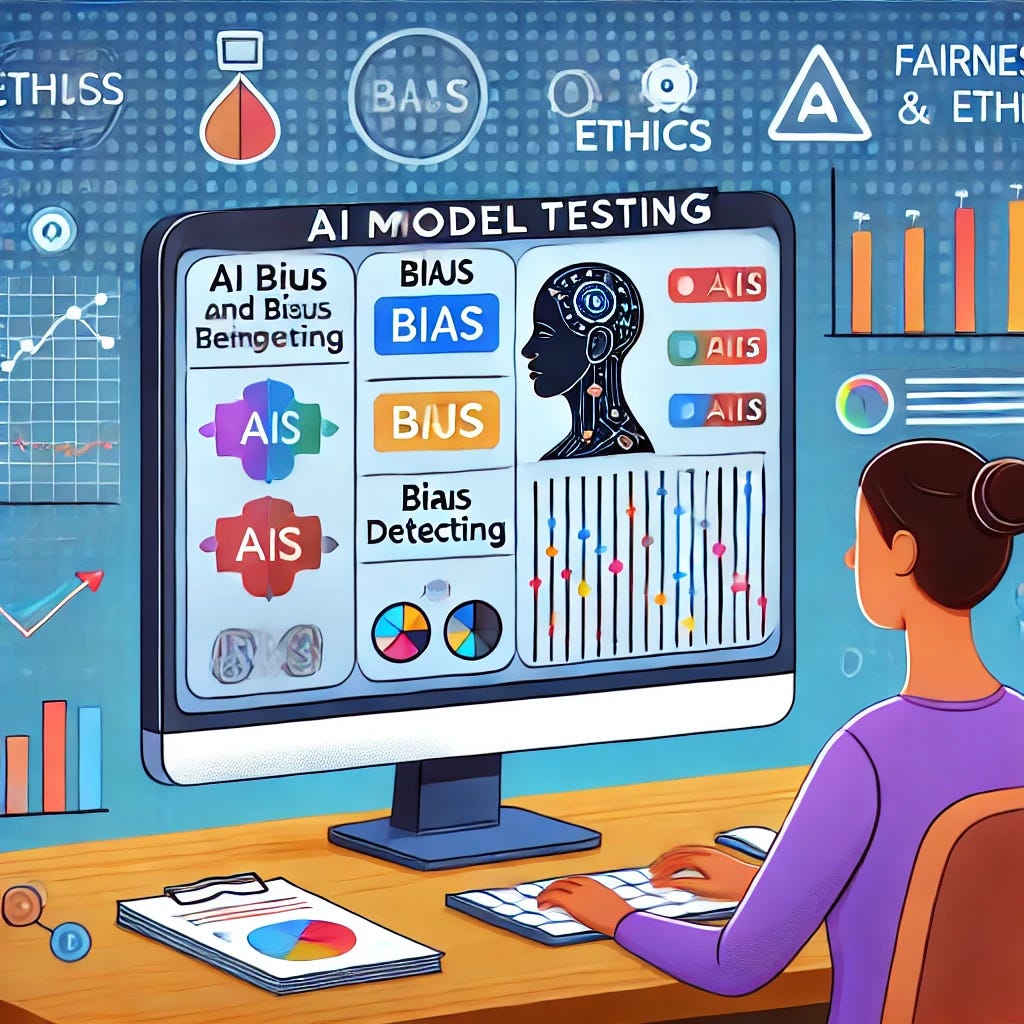Governing and Controlling the Growth of AI: A Strategic Approach for Records Management
AI Governance
Artificial intelligence (AI) has transformed how organizations manage, process, and interpret vast amounts of data. With its ability to enhance decision-making, automate routine tasks, and provide deep insights, AI holds enormous potential for records management. However, with great power comes great responsibility. Governing and controlling the growth of AI is critical to ensuring that organizations maintain compliance, accountability, and integrity within their information governance frameworks.
In this post, we’ll explore in greater detail how organizations can establish strong governance and control mechanisms for AI growth in records management. We’ll also provide real-world examples to illustrate these principles in action.
(Images for this post was generated via Dalle “ChatGPT”)
1. Establish Clear AI Governance Policies
Before any AI initiative is launched, organizations must lay the foundation with well-defined governance policies that outline how AI systems will be used, monitored, and maintained. These policies should be designed to address several key areas:
Data Privacy and Protection: AI systems often train models with vast datasets. If this data includes personally identifiable information (PII) or sensitive records, ensuring compliance with data protection regulations like GDPR, CCPA, or HIPAA is critical.
For example, suppose an AI system is used in a healthcare setting to automate patient record classification. In that case, policies must specify how this data will be anonymized, encrypted, and secured to prevent breaches.
Bias Mitigation: AI systems are only as good as the data they’re trained on, and biased data can lead to biased outcomes. A company developing an AI-based hiring tool that screens resumes must ensure that the AI doesn’t favor one demographic over another due to biased historical data. This might involve regular audits of the AI model to detect and correct for biases in resume screening.
Accountability: Define clear lines of responsibility. For instance, in a government agency using AI to manage public records, the records management team might be responsible for overseeing the AI system. In contrast, the IT department manages the technical infrastructure. Policies should make clear who is accountable for decision-making and problem-resolution.
Example:
A global financial institution implementing AI to streamline customer service interactions (via chatbots and automated responses) must ensure that all interactions are logged and stored securely. AI governance policies, in this case, would mandate that the AI system follow strict security protocols when interacting with customers’ financial records and personal data.
2. Create an AI Governance Committee
AI governance cannot be the responsibility of one department alone—it requires collaboration across various teams, including legal, IT, records management, compliance, and business operations. Forming an AI Governance Committee ensures that AI systems are continuously monitored, assessed, and adjusted as needed.
Responsibilities of the Committee:
Risk Monitoring: The committee should regularly assess AI-related risks, including data breaches, ethical concerns, and non-compliance with regulations.
AI Performance Reviews: The committee should review AI systems’ performance regularly to identify reduced accuracy, algorithmic bias, or system vulnerabilities.
Example:
Consider a multinational corporation using AI for predictive maintenance of industrial machinery. The AI Governance Committee in this organization might include data scientists who developed the models, compliance officers ensuring adherence to safety regulations, and operations managers. This team regularly evaluates the AI’s predictions, ensuring they meet regulatory standards and provide accurate results without bias toward specific machinery types or locations.
3. Assess Third-Party AI Vendors
Organizations may often opt to work with third-party AI vendors for software solutions. However, this introduces a level of dependency that can bring potential risks, including loss of control over data security, algorithmic transparency, and compliance.
When vetting AI vendors, organizations should:
Review Data Handling Practices: How does the vendor handle your organization’s data? Is it encrypted, anonymized, or shared with third parties?
Demand Transparency: Vendors should be able to provide detailed documentation on how their AI models were built and trained. For instance, if a vendor offers an AI system for automating HR tasks (like employee onboarding or training record management), it’s essential to know the datasets used to train the system and whether the vendor regularly tests for bias and fairness.
Example:
A government agency is implementing AI for document retrieval and classification contracts with an AI vendor. Before signing on, the agency demands that the vendor comply with local and international data protection regulations while ensuring that the AI platform offers audit trails for all document processing activities. The agency requires a contractual agreement that mandates continuous monitoring and reporting of data breaches or AI errors.
4. Implement Mandatory AI Documentation
Comprehensive documentation is essential for the responsible use of AI. Organizations should document all aspects of AI systems, including:
Model Development: Include details about how the AI model was trained, the data used, and the specific algorithms employed.
Decision-Making Processes: For AI systems making decisions (e.g., approving loans, classifying records, or recommending actions), it is essential to document how decisions are reached and what data inputs were used.
This ensures the organization can provide a transparent record of AI operations during a legal dispute or audit.
Example:
A law firm using AI to automate legal document review ensures that every decision the AI makes—such as flagging a document as confidential—is logged and auditable. This documentation lets the firm respond quickly to any queries or challenges regarding the AI’s accuracy and decision-making process.
5. Test for Errors and Biases Regularly
AI systems are not static; they evolve based on new data inputs, which can introduce new errors or biases over time. Regular testing of AI models ensures that they continue to operate effectively and by the organization’s governance policies.
Bias Testing: Bias can creep into AI systems over time, especially if the data inputs change. For example, an AI system used by a retailer to forecast customer demand might become biased if the data increasingly skews toward one demographic, ignoring other market segments.
Accuracy Testing: AI models should be regularly evaluated for accuracy, particularly in high-risk industries like healthcare or finance, where errors can have serious consequences.
Example:
A retail chain using AI to manage inventory levels conducts quarterly reviews of the AI’s performance, testing for accuracy in forecasting product demand. During one test, the company discovered that the AI disproportionately recommends stock increases for luxury items due to biased data from affluent locations. After identifying this issue, the retailer adjusts the data inputs and model parameters to ensure more balanced forecasts.
6. Update AI Policies as Technology Evolves
AI technologies evolve rapidly, and governance policies must keep up. As new AI techniques are developed—such as more sophisticated machine learning algorithms or natural language processing tools—organizations must revisit their governance frameworks and adapt accordingly.
Policies should also be updated to reflect changes in regulatory requirements or industry best practices.
Example:
A financial institution using AI for fraud detection updates its governance policies every six months to ensure they reflect the latest AI developments and regulatory standards. As deep learning models become more advanced, the institution adjusts its policy to incorporate new methods for identifying and mitigating potential biases in these models.
Conclusion:
The growth of AI presents unprecedented opportunities for records management, but it also requires diligent governance to ensure responsible use. By establishing clear policies, forming a governance committee, assessing third-party vendors, documenting AI processes, regularly testing for errors, and updating policies, organizations can navigate the complexities of AI and reap its benefits while maintaining accountability and compliance.






